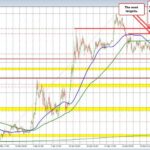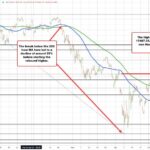
EUR/USD Breakout: Bullish Signals Amidst Market Volatility
Tháng 4 28, 2025
Navigating Nasdaq’s Turbulence: Strategies for Uncertain Times
Tháng 4 28, 2025Understanding the Role of Tariffs in Recent US Trade Policy
In the ever-evolving landscape of international trade, tariffs have emerged as a pivotal tool within the recent U.S. trade policy. Shaping discussions and decisions, tariffs not only aim to generate revenue but also seek to protect domestic industries and enforce fair trade practices. This blog post delves into the multifaceted roles tariffs currently serve in the U.S. economy.
Revenue Generation & Trade Deficit Reduction
One of the primary purposes of tariffs is their ability to generate substantial revenue while addressing the U.S. trade deficit. A baseline 10% tariff on all imports has been projected to bring in approximately $1.6 trillion in net revenue over time, particularly when considering the ripple effects of retaliatory measures from foreign countries. This initiative aligns with a declaration made by former President Trump on April 2, stating a national emergency concerning the “persistent U.S. trade deficit.” The invocation of the International Emergency Economic Powers Act (IEEPA) has allowed the government to implement these tariffs, highlighting their significance in national economic strategy.
Reciprocal Trade Enforcement
Tariffs are also strategically imposed to enforce reciprocal trade practices among nations. Specific countries perceived to engage in unfair trading policies face targeted tariffs. For example, a notable 25% tariff on select imports has been active since March 24, 2025, aimed at correcting imbalances in trade terms. Additionally, the imposition of a significant 54% effective tariff rate on Chinese goods, introduced on April 9, 2025, exemplifies the layered approach to addressing trade issues. These retaliatory measures signal a robust stance on ensuring fair trade dealings and underscore the administration’s commitment to confronting trade imbalances. In this context, China’s President Xi Jinping has convened global CEOs to address such trade tensions, highlighting China’s commitment to fair treatment for foreign companies amidst tariffs. This meeting signifies China’s dedication to globalization and its role in global economic stability. For more details, you can read about it here.
Domestic Industry Protection
Another crucial aspect of tariffs is their role in safeguarding American manufacturing industries. U.S. manufacturers such as Walker Forge and Franchino Mold vocalize strong support for the implementation of tariffs. They argue that these tariffs level the playing field by countering foreign subsidies and lax regulatory environments that can disadvantage U.S. producers. By protecting domestic industry, tariffs serve to bolster economic resilience against unfair foreign competition and promote a healthier manufacturing sector.
Strategic Trade Leverage
Lastly, tariffs function as strategic instruments within broader trade negotiations. The European Union, for instance, has considered imposing retaliatory tariffs of up to 50% on U.S. goods, set to take effect between April and July 2025. This dynamic illustrates how tariffs can operate as leverage in negotiations, compelling nations to navigate complex trade relations more cautiously. Former President Trump’s declaration of “Liberation Day” on April 2, 2025, framed tariffs as a form of liberation from foreign trade dominance, illustrating their potency as a negotiating tool.
Conclusion
In conclusion, tariffs are not merely financial tools; they embody a strategic approach to shaping national economic policy. With their multifaceted roles in revenue generation, trade enforcement, domestic protection, and strategic negotiation, tariffs remain a vital component of the U.S. trade landscape. As policies continue to evolve, the implications of these tariffs will need to be closely monitored, given their impact on both domestic industries and international trade relations. Understanding the intricate dynamics of tariffs offers insights into the complexities of contemporary trade challenges and strategies.
